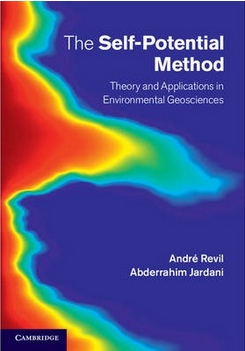
The Self-Potential Method : Theory and Applications in Environmental Geosciences
[BOOK DESCRIPTION]
The self-potential method enables non-intrusive assessment and imaging of disturbances in electrical currents of conductive subsurface materials. It has an increasing number of applications, from mapping fluid flow in the subsurface of the Earth to detecting preferential flow paths in earth dams and embankments. This book provides the first full overview of the fundamental concepts of this method and its applications in the field. It discusses a historical perspective, laboratory investigations undertaken, the inverse problem and seismoelectric coupling, and concludes with the application of the self-potential method to geohazards, water resources and hydrothermal systems. Chapter exercises, online datasets and analytical software enable the reader to put the theory into practice. This book is a key reference for academic researchers and professionals working in the areas of geophysics, environmental science, hydrology and geotechnical engineering. It will also be valuable reading for related graduate courses.
[TABLE OF CONTENTS]
Foreword ix
Susan S. Hubbard
Preface xi
1 Fundamentals of the self-potential method 1 (22)
1.1 Measurements 1 (10)
1.2 The electrical double layer 11 (3)
1.3 Brief history 14 (2)
1.4 The Poisson equation 16 (1)
1.5 Sources of noise 17 (2)
1.6 Conclusions 19 (4)
Exercises 19 (4)
2 Development of a fundamental theory 23 (59)
2.1 Non-equilibrium thermodynamic 23 (21)
2.2 Upscaling: from local to macroscopic 44 (24)
equations
2.3 The geobattery and biogeobattery 68 (7)
concepts
2.4 Conclusions 75 (7)
Exercises 77 (5)
3 Laboratory investigations 82 (28)
3.1 Analyzing low-frequency electrical 82 (17)
properties
3.2 Investigating the geobattery concept 99 (5)
in the laboratory
3.3 Conclusions 104(6)
Exercises 105(5)
4 Forward and inverse modeling 110(44)
4.1 Position of the problem 110(4)
4.2 Gradient-based approaches and their 114(17)
limitations
4.3 Fully coupled inversion 131(17)
4.4 Conclusions 148(6)
Exercises 149(5)
5 Applications to geohazards 154(38)
5.1 Landslides and flank stability 154(6)
5.2 Sinkhole detection 160(7)
5.3 Detection of cavities 167(4)
5.4 Leakages in dams and embankments 171(20)
5.5 Conclusion 191(1)
6 Application to water resources 192(53)
6.1 Pumping tests 192(17)
6.2 Flow in the vadose zone 209(10)
6.3 Catchments hydrogeology 219(13)
6.4 Contaminant plumes 232(11)
6.5 Conclusions 243(2)
Exercises 243(2)
7 Application to hydrothermal systems 245(39)
7.1 Stochastic inversion of temperature 245(16)
and self-potential data
7.2 The Cerro Prieto case study 261(7)
7.3 Gradient-based approach applied to 268(14)
hydrothermal fields
7.4 Conclusions 282(2)
Exercises 282(2)
8 Seismoelectric coupling 284(58)
8.1 Position of the problem 284(2)
8.2 Seismoelectric theory in saturated 286(5)
media
8.3 Numerical modeling 291(2)
8.4 Application in saturated conditions 293(5)
8.5 Seismoelectric theory in unsaturated 298(21)
media
8.6 Application in two-phase flow 319(7)
conditions
8.7 Localization of hydromechanical events 326(9)
8.8 Seismic beamforming and the formation 335(3)
of electrical bursts
8.9 Conclusions 338(4)
Exercises 339(3)
Appendix A A simple model of the Stern layer 342(3)
Appendix B The u-p formulation of poroelasticity 345(3)
References 348(19)
Index 367

 新书报道
新书报道